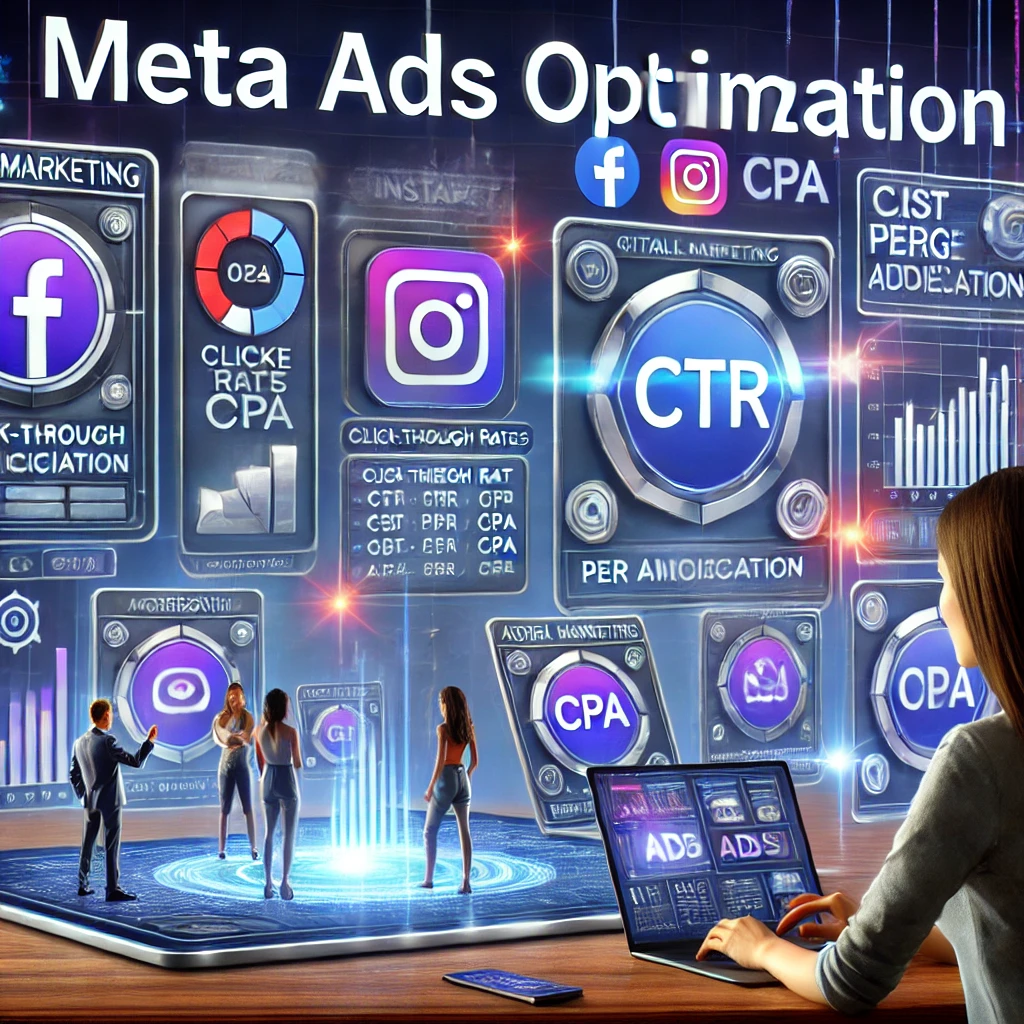In today’s fast-paced digital landscape, optimizing your Meta Ads is crucial for businesses looking to maximize their return on investment (ROI). With platforms like Facebook, Instagram, and Messenger being dominant in the digital advertising space, having an effective ad strategy can significantly impact your brand’s visibility, engagement, and conversions.
This in-depth guide will provide actionable insights into how you can fine-tune your Meta Ads strategy for better performance and cost efficiency.
Understanding Meta Ads
What Are Meta Ads?
Meta Ads refer to advertisements placed on Meta-owned platforms, including:
- Facebook (Feed, Stories, Marketplace, Reels, Right Column)
- Instagram (Feed, Stories, Reels, Explore)
- Messenger (Inbox, Sponsored Messages)
- Audience Network (Ads displayed on partner apps and websites)
These ads leverage advanced AI algorithms and user data to display highly relevant content to the target audience, making Meta Ads one of the most effective digital advertising tools available.
Types of Meta Ads and Their Uses
Meta offers various ad formats, each serving a unique purpose. Understanding their strengths can help you choose the best one for your campaign.
- Image Ads – A single high-quality image with engaging text and a strong call-to-action (CTA). Best for brand awareness.
- Video Ads – Dynamic content that captures attention quickly. Ideal for storytelling and product demonstrations.
- Carousel Ads – Multiple images or videos in a single ad unit, allowing users to swipe through. Great for showcasing multiple products.
- Collection Ads – A visually immersive ad format, best for eCommerce brands looking to highlight a range of products.
- Instant Experience (formerly Canvas Ads) – A full-screen, interactive mobile ad that provides a more engaging user experience.
- Lead Ads – Optimized for generating leads directly within Meta platforms without requiring users to leave the app.
- Slideshow Ads – A lightweight alternative to video ads, offering movement without requiring high-resolution video production.
Choosing the Right Format: The best ad format depends on your objective—whether it’s brand awareness, engagement, lead generation, or sales conversions.
Why Optimizing Meta Ads Is Important
Without proper optimization, businesses risk wasting their ad budgets on campaigns that fail to drive meaningful engagement or conversions. Here’s why optimization is critical:
1. Cost Efficiency
Optimizing ads helps you lower your cost per click (CPC), cost per acquisition (CPA), and cost per thousand impressions (CPM), ensuring every dollar is spent wisely.
2. Increased Engagement and Conversions
An optimized ad strategy ensures your message reaches the right audience at the right time, leading to higher engagement and conversion rates.
3. Competitive Edge
With thousands of brands competing for user attention, optimizing your ads ensures you stand out and capture more market share.
Key Strategies to Optimize Meta Ads for Maximum ROI
1. Audience Targeting
Precise audience targeting is the backbone of a successful Meta Ads campaign. Meta’s advanced targeting options allow advertisers to refine their audience based on various parameters.
- Custom Audiences – Target users who have interacted with your brand via website visits, engagement, or previous purchases.
- Lookalike Audiences – Expand your reach by targeting users who resemble your existing customers.
- Detailed Targeting – Leverage Meta’s extensive data points (age, location, interests, behaviors) to reach the most relevant audience.
Best Practices:


2. Crafting High-Quality Ad Creative
Ad creatives (visuals and copy) determine whether users will stop scrolling to engage with your ad.
Visual Best Practices:


Copywriting Tips:


3. Ad Placement Strategy
Meta offers automatic placements (letting its AI determine the best spots) and manual placements (where you select where ads appear).
Best Approach:


4. Budgeting & Bidding Strategy
To maximize ROI, you must set an efficient budget and bidding strategy.
Bidding Strategies:
- Lowest Cost (Automatic Bidding) – Meta optimizes for the lowest possible conversion cost.
- Bid Cap (Manual Bidding) – You set the maximum amount you’re willing to pay for an action.
Budgeting:


Pro Tip: Monitor and adjust bidding strategies frequently to prevent budget exhaustion.
Tracking and Analytics for Optimization
1. Implementing Facebook Pixel
Facebook Pixel is essential for tracking conversions, user interactions, and retargeting website visitors.
- Enables remarketing to visitors who didn’t convert.
- Provides insights into customer journey and helps optimize for better conversion rates.
2. Monitoring Key Performance Indicators (KPIs)
Tracking these KPIs allows you to make data-driven decisions:





Finalizing Your Strategy: A/B Testing & Continuous Optimization
1. A/B Testing to Improve Performance
Test variations of:



2. Continuous Learning & Adaptation
Digital advertising is constantly evolving. Stay ahead by:


Conclusion
Optimizing Meta Ads is an ongoing process requiring strategy, data analysis, and constant refinement. By fine-tuning audience targeting, ad creatives, placements, and budgets, businesses can significantly increase engagement, conversions, and revenue.


“Thank you for taking the time to read this blog. If you come across any inaccuracies or outdated information, please feel free to notify me via email. I have invested over eight hours in researching and writing this article, and I hope it serves as a valuable resource to save you time and effort.”
Let me know if you’d like any further refinements! 😊
